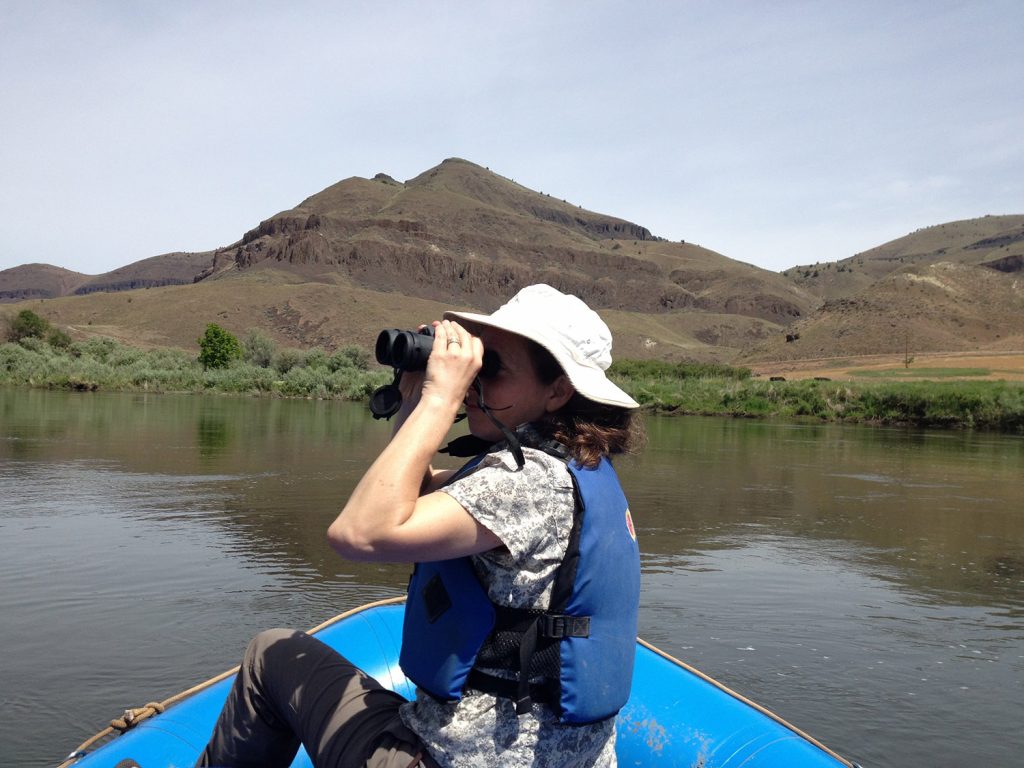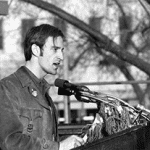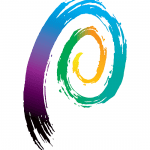Geologists who look like me
Clark science professors are creating a sense of belonging in the classroom and making their courses more welcoming to all students
By Michelle Stoklosa, Ph.D.
As a kid, I had a mock classroom set up in the basement of my home with old textbooks, chairs with stuffed animals propped up in them and carefully marked gradebooks on an old desk at the front of the class. I don’t think then that my parents were surprised with my decision to become an instructor.
I also enjoyed doing things outside—like making mud pies, “saving” toads from the lawnmower and creating toad homes—while staying out late in the summers to catch lightning bugs (a.k.a. fireflies). At some point, I started marking the insects with chalk on their backs so I would know if I had caught them the previous night (and yes, I kept track of the numbers). Years later when I went off to college, it was no surprise to my family that I decided to major in biology.
I’m not a biology instructor, though. Instead, I have been teaching college-level geology courses for almost 20 years. How did I get from counting fireflies to earning a doctorate in geology? In college, I had taken a few geology courses so that I could have a minor on my transcript. An instructor in one of my geology classes left a note on my lab exercises one day telling me that I was doing well in the class. She also asked whether I had considered pursuing a career in geology. This both surprised and excited me. My textbooks did not include many women. Having a geologist that looked like me—a white woman—as my instructor and mentor, made it much easier for me to envision myself as a geologist. Today, I am a geologist and a full-time faculty member in the Earth and Environmental Science department at Clark College.

Michelle Stoklosa, Ph.D., a Clark geology professor, on the Owhyee River. She and her Clark colleagues are developing practices to broaden who enters and succeeds in the science fields. Photo courtesy of Michelle Stoklosa
In 2021, the field of geosciences is still dominated by men—and mostly white men. My department colleagues and I feel strongly that more students should be a part of this field since it is ripe with opportunity. We want to increase the number of students interested in our program at Clark, but also aspire to broaden the participation to include more Latinx, Black, Indigenous and other groups of people who are not well represented in this field. To do this we need to find ways to create a similar sense of belonging in our classrooms as I experienced, but for all people.
My colleagues and I have participated in a National Science Foundation-funded project called Supporting and Advancing Geoscience Education at Two-Year Colleges (SAGE 2YC). We are part of a national cohort of faculty at two-year colleges working together to develop practices at our institutions that should lead to broader participation and increased success of students in STEM courses and field.
The project is helping us create a plan to increase the number, diversity and success of students in our program. We’ve been examining our enrollment, exploring and implementing strategies to help students develop a sense of belonging in our classrooms, as well as reducing the effects of stereotype threats.
Ensuring course content and activities are relevant to the lives of our students is one strategy we added into our courses. Another is talking about scientists from underrepresented groups. We’ve got a long list of strategies to go and our work is ever-evolving.
Another I use is Earthquake Week, which occurs the last week of the term in Geology 101 at Clark College. I think it’s better than Shark Week. This is usually one of the most animated weeks in my classroom. Many students have a story to share about their earthquake experience. Others who have been quiet most of the term start asking probing questions about earthquake risks. Still others share their advice for preparing emergency kits. The topic is technical, yet it’s relevant to their lives, because here in the Pacific Northwest we are aware of the dangers of the next big Cascadia Subduction Zone earthquake. Many of the topics in my geology courses are as relevant to students as earthquakes are, but I need to find better ways to make other course topics just as engaging to students.
We are sharing our findings with our Clark colleagues and are looking to make even more connections with our college and community partners to strengthen our plan. I am grateful for the expertise in Clark’s Office of Diversity, Equity and Inclusion and their willingness to help us work toward our goals.
Feeling as if you belong in Clark’s classrooms and seeing instructors or classmates who look like you is an essential part of being an inclusive academic environment. I am pleased to see more evidence that Clark is committed to closing equity gaps, and I am honored to be a part of this process, because I know it can work. Just ask college-age me who felt recognized when her professor suggested she would do well in the geology field. That made all the difference for me.

Professor Michelle Stoklosa’s class traveled to the Columbia River Gorge for a field trip in 2019. Photo courtesy of Michelle Stoklosa
Michelle Stoklosa, Ph.D., is the chair of Clark’s Earth and Environmental Science department and a geology professor.



